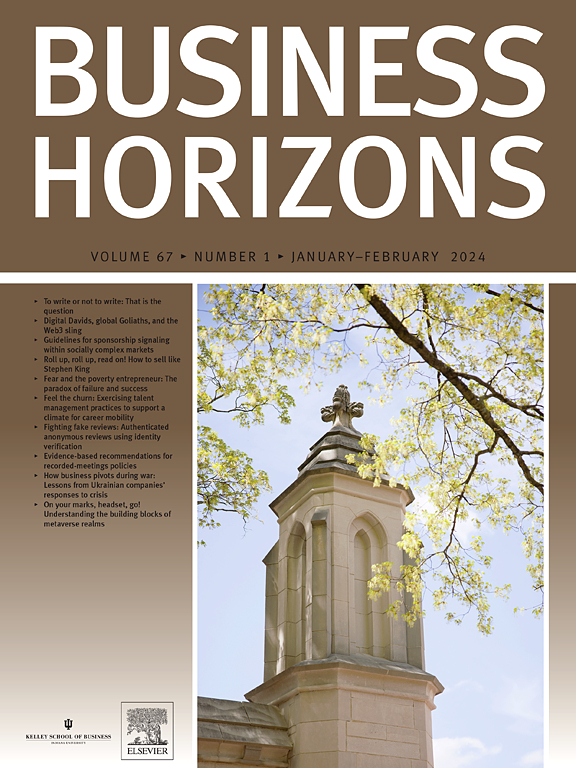An innovative framework to advance workplace equity
IF 7
3区 管理学
Q1 BUSINESS
引用次数: 0
Abstract
Reliance on traditional diversity, equity, and inclusion approaches like implicit bias and antiharassment training have failed to address systemic inequities embedded within organizations. In response, we interviewed business leaders/practicing managers and fielded a nationally representative survey of 1,062 businesses in the US (in partnership with the Society for Human Resource Management). Based on our findings, we developed an innovative, two-dimensional framework (i.e., the Equity of Employment Systems Framework) that addresses the root causes of workplace inequity. Rather than focusing solely on an overall measure of equity for an organization, this framework focuses on seven systemic components (i.e., levers for change) that measure and impact equity in an organization’s 10 employment systems. Levels of equity vary greatly among the 10 employment systems within organizations: recruitment and hiring, compensation and benefits, and orientation and onboarding represent the strongest measures of equity. In contrast, supervision and mentoring, job structures, and resources and supports are the least equitable. To help managers strengthen the equity of their employment systems, we outline a five-step process based on our proposed framework. This five-step process can advance equity within organizations and create more inclusive, agile, and innovative businesses.
促进工作场所公平的创新框架
依赖传统的多样性、公平和包容方法,如隐性偏见和反骚扰培训,未能解决组织内部的系统性不平等问题。为此,我们与人力资源管理协会(Society for Human Resource Management)合作,采访了商界领袖/在职经理,并对美国1062家企业进行了一项具有全国代表性的调查。根据我们的研究结果,我们开发了一个创新的二维框架(即就业制度公平框架),以解决工作场所不平等的根本原因。这个框架不是仅仅关注于一个组织的公平的总体衡量,而是关注于衡量和影响一个组织的10个雇佣系统中的公平的7个系统组成部分(即,改变的杠杆)。各组织内部的10种就业制度之间的公平程度差别很大:招聘和雇用、薪酬和福利、入职培训和入职培训是最有力的公平衡量标准。相比之下,监督和指导、工作结构、资源和支持是最不公平的。为了帮助管理人员加强其雇佣制度的公平性,我们根据我们提出的框架概述了一个五步流程。这个五步流程可以促进组织内部的公平,并创建更具包容性、敏捷性和创新性的业务。
本文章由计算机程序翻译,如有差异,请以英文原文为准。
求助全文
约1分钟内获得全文
求助全文
来源期刊

Business Horizons
BUSINESS-
CiteScore
17.70
自引率
5.40%
发文量
105
期刊介绍:
Business Horizons, the bimonthly journal of the Kelley School of Business at Indiana University, is dedicated to publishing original articles that appeal to both business academics and practitioners. Our editorial focus is on covering a diverse array of topics within the broader field of business, with a particular emphasis on identifying critical business issues and proposing practical solutions. Our goal is to inspire readers to approach business practices from new and innovative perspectives. Business Horizons occupies a distinctive position among business publications by offering articles that strike a balance between academic rigor and practical relevance. As such, our articles are grounded in scholarly research yet presented in a clear and accessible format, making them relevant to a broad audience within the business community.
 求助内容:
求助内容: 应助结果提醒方式:
应助结果提醒方式:


